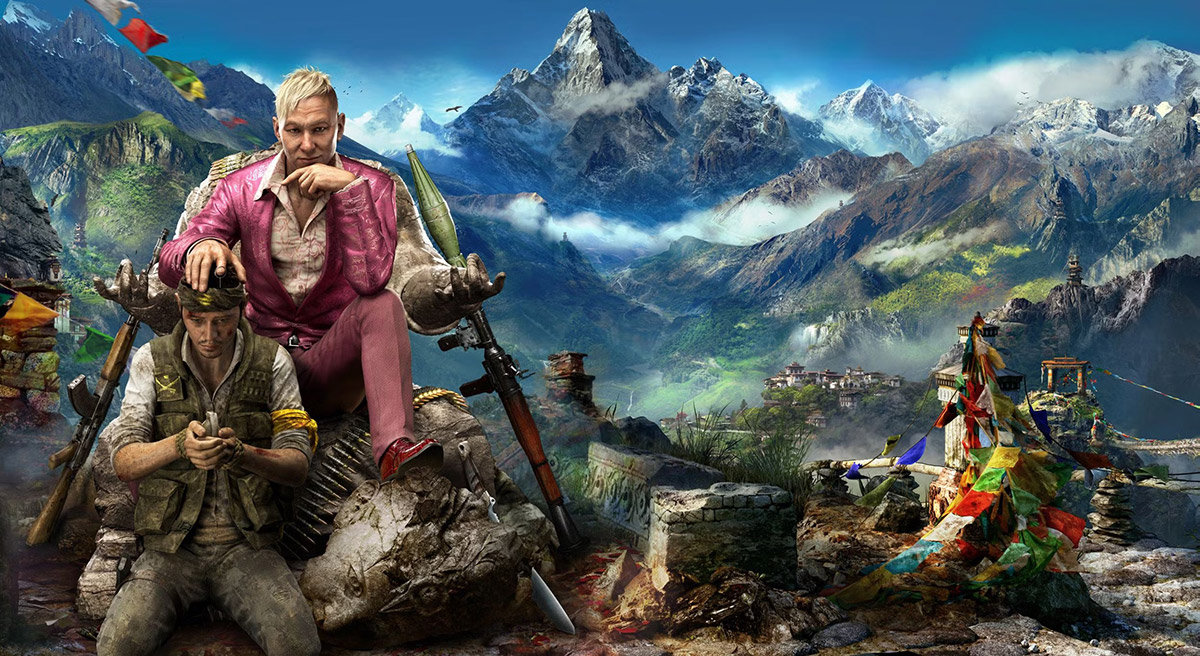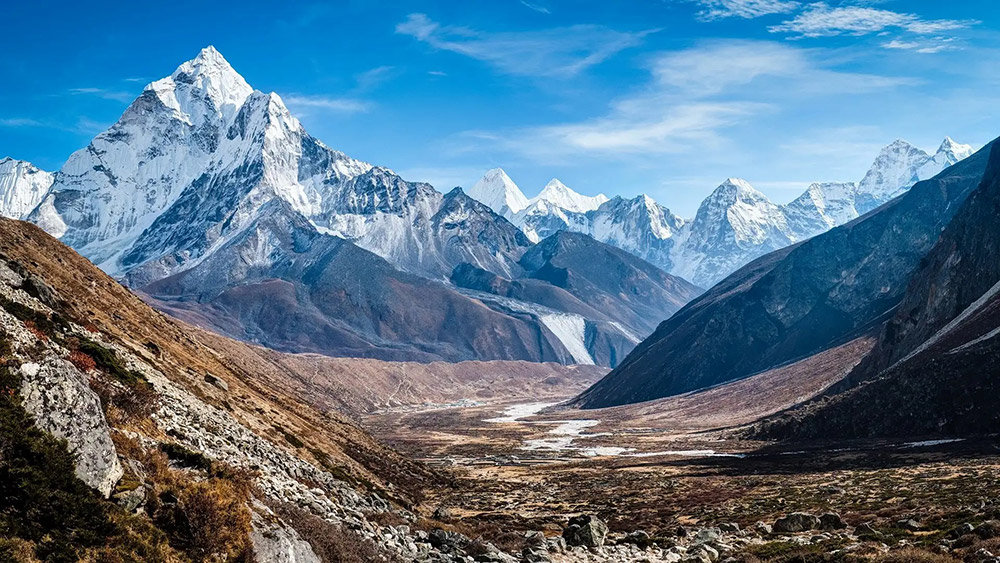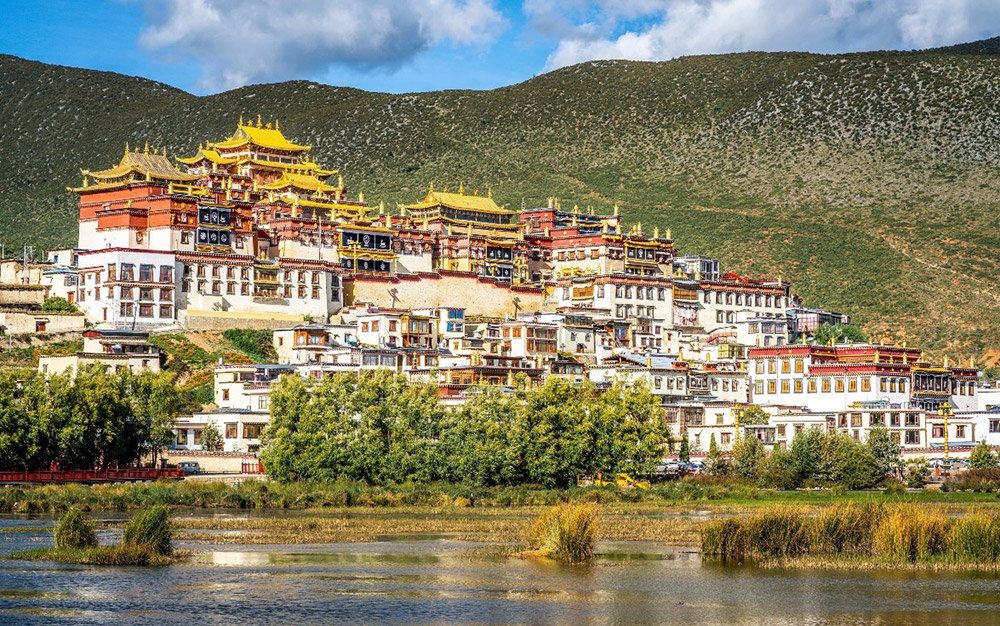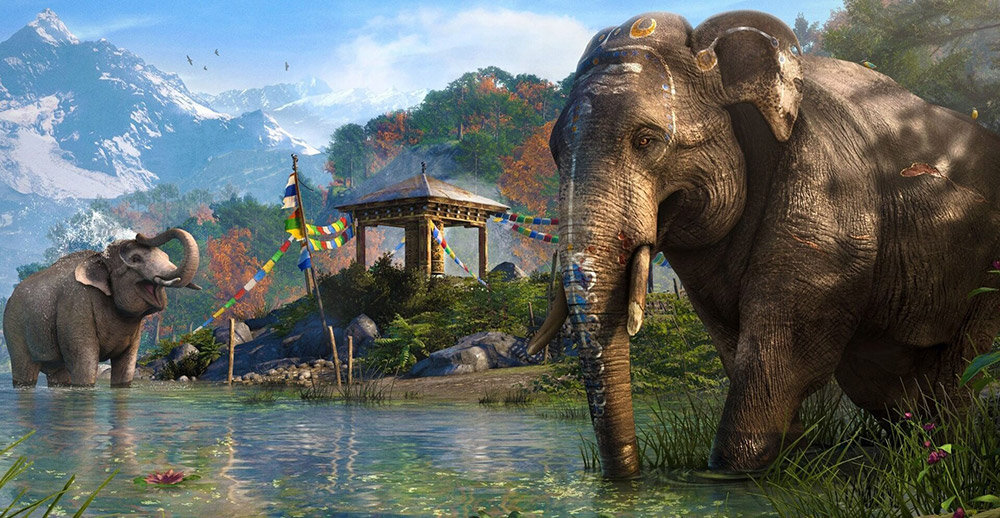Ubisoft’s Far Cry 4 whisks players away to the fictional Himalayan kingdom of Kyrat, a land filled with towering peaks, ancient temples, and mystical legends. But did you know that many elements in the game are inspired by real locations and cultures in China? From the breathtaking Himalayan landscapes to the deep-rooted traditions of Tibetan Buddhism, let’s embark on a journey to discover how Far Cry 4 draws from China’s majestic scenery and rich folklore!

The Himalayas: China’s Snowy Rooftop of the World
Kyrat is a rugged and untamed land, but its towering mountain peaks and snowy landscapes bear a striking resemblance to the Himalayan ranges that stretch across China’s Tibet Autonomous Region. The Tibetan Plateau, often called the “Roof of the World,” is one of the most extreme environments on Earth, just like Kyrat with its treacherous terrain and unpredictable weather. The game’s highest peaks mirror the breathtaking Ngari Glacier and Rongbuk Glacier, which rest near Mount Everest, the world’s tallest mountain. Kyrat’s high-altitude survival elements are reminiscent of real Himalayan mountaineering challenges, where adventurers must brave harsh blizzards, creaking ice, and the constant threat of avalanches. Just like in real life, the game makes the mountains feel awe-inspiring yet unforgiving—one wrong step, and you’re tumbling down a snow-covered cliff!

Tibetan Buddhist Temples: The Soul of Kyrat
While Kyrat is fictional, its Buddhist temples and monasteries are directly influenced by Tibetan Buddhist architecture found in China’s Tibet and Yunnan provinces. The monasteries in the game resemble real-life temples like Jokhang Temple (大昭寺) in Lhasa or Songzanlin Monastery in Yunnan, featuring intricate wood carvings, golden statues, and fluttering prayer flags. Throughout Kyrat, players encounter prayer wheels, which Tibetan Buddhists spin to spread blessings, as well as mani stones inscribed with sacred Buddhist mantras—just like those found in Tibet. The peaceful monks living in isolated monasteries in the game reflect the Tibetan monks who dedicate their lives to studying scriptures and meditating in the highlands.

Shangri-La: A Mythical Kingdom of Light
One of the most stunning parts of Far Cry 4 is its Shangri-La sequences, where players enter a mystical, dreamlike world filled with floating lotuses, golden skies, and a celestial tiger companion. But did you know Shangri-La is actually based on a Chinese legend? The term “Shangri-La” comes from the 1933 novel Lost Horizon by James Hilton, which describes a hidden paradise in the Himalayas, though the concept itself is inspired by Tibetan mythology and the lost paradise of Shambhala (香巴拉). Many Tibetan Buddhist texts describe Shambhala as a hidden, peaceful kingdom filled with wisdom and enlightenment, believed to be somewhere in the Himalayas, much like how Far Cry 4 presents it as an ethereal, otherworldly realm. Today, a real town called Shangri-La (香格里拉市) exists in Yunnan, China, renamed to reflect the mystical paradise from the novel and attracting visitors who seek adventure and spiritual tranquility. In the game, players explore Shangri-La to unlock secrets of the past, just like how explorers and monks have long searched for this legendary paradise in real life!
Yeti Legends: The Snow Monster of the Himalayas
In the game’s DLC, Far Cry 4: Valley of the Yetis, players come face to face with giant, monstrous Yetis—but did you know that the Yeti is a real legend from the Himalayan region? The Yeti (雪人), also called the “Abominable Snowman,” is said to roam the snowy peaks of the Tibetan Plateau and Himalayas. Locals believe it is a massive, ape-like creature covered in white fur, lurking in the mountains. In 2019, Chinese researchers even discovered large footprints in the snow of the Himalayas, sparking debates on whether the Yeti could be real! In Tibetan folklore, the Yeti is sometimes seen as a guardian of the mountains, protecting sacred places from outsiders—just like how they fiercely defend their snowy caves in the game!
Tibetan Buddhist Culture in the Game
Besides its stunning landscapes and myths, Far Cry 4 also incorporates Tibetan Buddhist themes into its story and world-building. The game explores Buddhist concepts like the cycle of rebirth (轮回) and karma (因果报应), influencing character choices and the player’s journey. Throughout Kyrat, we see people lighting butter lamps, performing ritual dances, and meditating, all of which are common Tibetan Buddhist practices. In the Shangri-La sequences, players fight against demonic foes while aided by a mystical white tiger, reflecting Tibetan Buddhist beliefs in spiritual guardians and deities that protect against evil. Through these elements, Far Cry 4 immerses players in a world where spirituality, mythology, and adventure blend seamlessly together!
A Beautiful Blend of Reality and Fantasy
Although Far Cry 4 is set in the fictional land of Kyrat, its world is deeply inspired by real places, myths, and traditions from China’s Himalayan region, Tibetan Plateau, and Buddhist culture. From the breathtaking snowy peaks to legendary lost paradises, from sacred monasteries to mythical Yetis, the game brings together the beauty, mystery, and spirituality of this region into an unforgettable adventure.

So next time you play Far Cry 4, take a moment to admire the hidden Chinese influences that shape this incredible world. Whether you’re scaling icy cliffs, wandering through ancient temples, or battling Yetis in the snow, you’re exploring a land filled with history, culture, and legendary tales!
Have you spotted any other Chinese influences in Far Cry 4? Let us know in the comments!
Contact us today to craft your dream China adventure!

